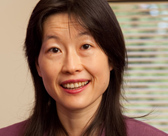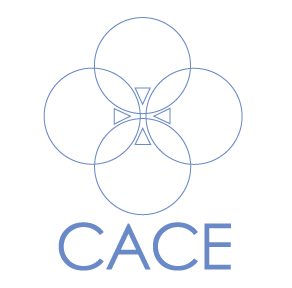
Miho Nonaka
Education That Points to the True Center
The purpose of a liberal arts education is not to turn your brain into an archive of knowledge, but to teach you “how to think.” In my own student years at a small liberal arts college in New England, it didn’t take me long to figure out the futility of trying to retain all the information I received from various lectures and readings each semester. In the end, I became convinced that part of the value of a liberal arts education was to have a glimpse of the mind at work. I learned the most from the professors who didn’t have neatly packaged answers, who were open to questions and uncertainties, and who weren’t afraid of demonstrating their own messy thinking process with a kind of elegant playfulness that fascinated me. Liberal arts education is not about shopping for knowledge in a wide variety of disciplines. In fact, it’s impossible to shop for knowledge the way you do for information—building knowledge requires commitment, both from the teacher and from the student, in their shared context, in the mutual quest of how to think deeply.
Still, the phrase “how to think” has the ring of a familiar “liberal arts cliché.” In his famous commencement address at Kenyon College in 2005, author David Foster Wallace takes a step further and explains that it is not about the ability to think, but “learning how to exercise some control over how and what you think.” To illustrate his point, he asks his audience to imagine shopping at the supermarket at the end of a long, tiresome, “average adult day.” Standing at the endless checkout line among all the other equally frustrated customers, the challenge is whether one can make a conscious decision to use one’s imagination, to have compassion, and to really feel for the frantic cashier who is “overworked at a job whose daily tedium and meaninglessness surpasses the imagination of any of us here at a prestigious college.” It is no small challenge, because it is everyone’s “default setting” to believe that “I am the absolute center of the universe; the realest, most vivid and important person in existence.” Like many other advocates of liberal arts education, Wallace argues for “freedom,” and the kind he posits is the one from the deadly master of self and its mind-numbing monologue. Learning “how to think” involves being attentive enough to the world to make an exit from the kingdom of your own head, “being able truly to care about other people and to sacrifice for them over and over in myriad petty, unsexy ways every day.”
If the essence of a secular liberal arts education is about opening of a mind to the world and to the conscious exercise of ethical imagination, Christian liberal education needs to be more. In her essay, “Love of the Order of the World,” Simone Weil also recognizes human imagination’s tendency to situate the self at the center of the world, no matter how illusory it is. Like Wallace, Weil believes in the necessity of transforming our default vision: we are called to relinquish an imaginary position as the center, “not only intellectually but in the imaginative part of our soul,” which will allow us to “awaken to what is real and eternal” (100). While Wallace’s argument, with all its heated intelligence, comes very close to sounding religious (he asserts that it is within our power to turn the mundane, “consumer-hell type situation” into something that is “not only meaningful, but sacred”), it is neither concerned with the “eternal,” nor does it provide an answer as to why we should strive for such selflessness—besides the implied value of human dignity, and the emancipation of the mind for its own sake. If this is the limit of Wallace’s argument, Weil, on the other hand, presents a vision that is more than the humanist ideal. For her, divesting the self of its “false divinity” as the imaginary center means humility to consent that “all points in the world are equally centers,” and what’s more, to believe that “the true center is outside the world.”
The unique foundation of Christian liberal education is the belief that God, “the true center,” does exist. It cultivates the heart for the world as God has made it, in all its wonders and awe; it lays ground for the liberation of mind in which one makes a shift from simply being served to serving the world as a proactive steward. And most importantly, it does offer a reason as to why such endeavor is worthwhile. Christian liberal arts education, like its secular version, teaches the freedom to see beyond the blinding lens of self in its commitment to the world, and it is because for us, the ultimate model of emptying of self is Jesus Christ. Unlike our “false divinity,” He is the one who willingly relinquished His status as the authentic center of all things, and opened Himself completely to the world created through His divine imagination. The true center outside the world chose to come down to intersect with humanity and to subject Himself to the order of gravity. The ethos of Christian liberal education must be based on Christ’s radical humility and sacrifice. Put in the simplest of terms, its goal is to learn how to think like Christ. We are called to de-center our gaze, not only to engage with but also to love the world and our neighbors, following in the footsteps of God’s divine love.
Wallace, David Foster. “This Is Water.” Kenyon College. Gambier, OH. 21 May 1005. Commencement Address.
Weil, Simone. “Love of the Order of the World.” Waiting for God. New York: Perennial, 2001. 99-117. Print.
Contact Us
Center for Applied Christian Ethics
117 Blanchard Hall
501 College Ave
Wheaton, IL 60187
